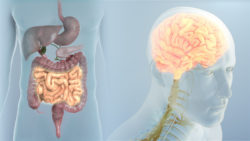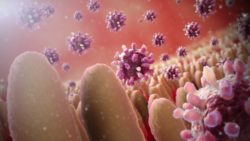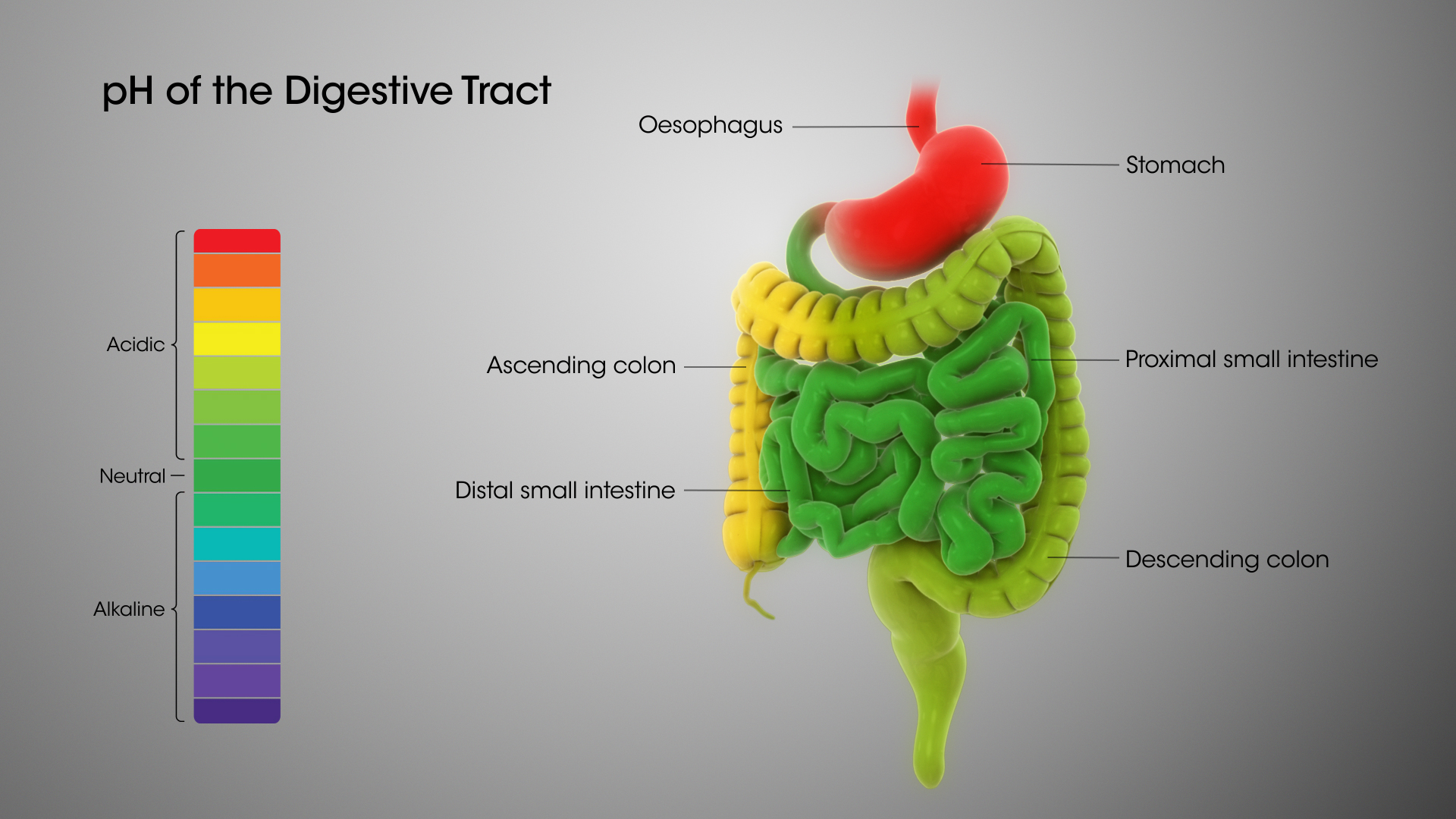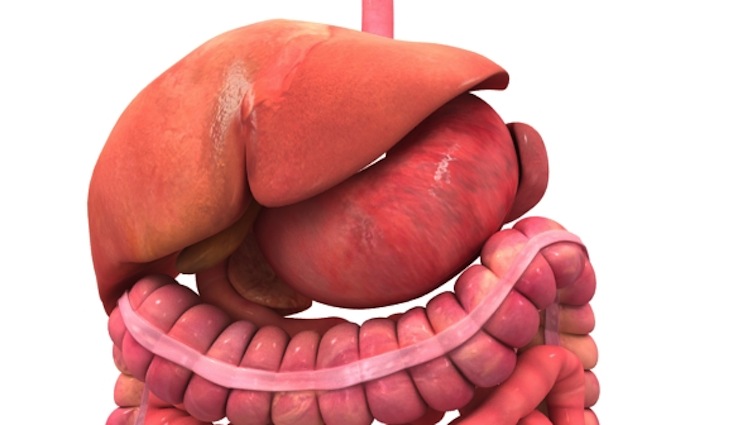The food begins its journey from the mouth where the tongue rolls it and teeth break it into pieces, while saliva softens it to begin the process of digestion. It further goes down the digestive system.
The walls of the digestive system are muscular and move constantly to propel food through it, simultaneously mixing the contents within each organ. This movement is known as peristalsis.
Let’s see what happens to the food as it moves through various organs of the digestive system...
Once the food is swallowed, it involuntarily proceeds under the control of the esophagus and brain. The lower esophageal sphincter muscle controls the passage of food and liquid between the esophagus and stomach. As food approaches the closed sphincter, the muscle relaxes and lets food pass through it into the stomach.
The stomach stores the incoming food, mixes it with digestive juices, and slowly empties its contents into the small intestine. The cells lining its wall secrete dilute hydrochloric acid that assists in the breakdown process.
In the small intestine, the food is mixed with digestive juices from the pancreas, liver, and intestine. The walls of the small intestine are specialized to absorb the nutrients from the digested food into the bloodstream. The blood delivers these nutrients to various body parts.
Various enzymes aid the process of digestion and their effectiveness depends on different pH levels. A pH too high (basic) or too low (acidic) might denature a particular enzyme and prevent it from performing its function. Saliva keeps the pH in the mouth between 6.5 and 7, optimum for the enzyme salivary amylase to act on carbohydrates. Pepsin that helps digest proteins in the stomach, works best at a pH around 2, while the enzymes that function in the intestines (including peptidases and maltase), work best at a pH around 7.5.
The digested mass is further pushed into the large intestine which is a highly specialized organ responsible for processing waste. The large intestine function is mainly about making the process of emptying the bowels easy and convenient.
The waste left over from the digestive process, is passed through the colon by means of peristalsis, first in a liquid state and ultimately in a solid form. This is because the colon absorbs water and any remaining nutrients, changing the waste from liquid to ‘stool’. The rectum stores stool until it is pushed out of the body through anus.
From the above overview, it is clear that...
- Although positioned in the center of the digestive system, the stomach isn’t an organ where actual digestion takes place; it holds food, churns it, mixes it with gastric juices, physically breaking it down into bits and turning them into a thick paste called ‘chyme’. However, very little chemical digestion, which is necessary for nutrient absorption, occurs here.
- The small intestine is where actual digestion and absorption of nutrients takes place. After further breaking down the chyme with powerful digestive enzymes, the small intestine absorbs the nutrients and passes them into the bloodstream.
Understanding The Digestion Process in Stomach and Small Intestine
Stomach is a roughly crescent-shaped enlargement of the digestive system. The inner layer of the stomach is full of folds known as rugae. Rugae let the stomach stretch when accommodating large meals, as well as help to grip and move food during digestion.
Digestion in the stomach is of mainly 2 types: mechanical and chemical. Mechanical digestion involves physical breakdown of large food particles into smaller chunks, while chemical digestion is the chemical conversion of larger molecules into smaller molecules.
Based on shape and function, the stomach has 4 main regions:
The lower esophageal sphincter opens into cardia is the small, narrow, tube-like region that holds food and acid. The cardia empties into the wider body that forms the central and largest region of the stomach.
Lying superior and inferior to the body is a dome shaped fundus, and a funnel shaped pylorus, respectively.
The overall mixing of food with the gastric juices results in the production of a thick semi solid paste known as chyme. While food is being physically mixed with gastric juice to produce chyme, the digestive enzymes present in the gastric juice chemically digest large molecules into their smaller subunits.
- Gastric lipase splits triglyceride fats into fatty acids and diglycerides.
- Pepsin breaks proteins into its constituent amino acids.
The chemical digestion is only initiated in the stomach as the digestive enzymes only structurally simplify and prepare complex proteins and fats for further digestion.
Small intestine is a 22 feet long muscular tube made up of 3 segments — duodenum, jejunum, and ileum. Peristalsis is at work in this organ too.
- The duodenum is the initial-most, smallest section of small intestine that connects to the stomach through pyloric sphincter muscle. Chyme is mixed with bile from the liver and pancreatic juice from the pancreas to complete its digestion here.
- The jejunum is the middle section of the small intestine that serves as the primary site of nutrient absorption.
- The ileum is the final and the longest section of the small intestine that empties into the large intestine via the ileocecal sphincter. Complete absorption of nutrients that were missed in the jejunum, occurs here.
Digestion is an important process as it breaks down food/drink into simpler molecules called nutrients, which the body uses for energy, growth, and cell repair. These nutrients are namely carbohydrates, proteins, fats, and vitamins.

Is Your Digestive System Making You Mentally Sick?
Parkinson’s disease involves the death of neurons deep within the brain, causing tremors, stiffness and difficulty in movement. It was proposed that the nerve damage leading to Parkinson's starts in the stomach or colon before spreading to brain cells.Read More..

Gastroenteritis Explained
Gastroenteritis refers to inflammation and irritation of the gastrointestinal tract which includes the small intestine, large intestine, and the stomach. The condition is mostly caused due to food poisoning, bacteria, virus, or parasites. Gastroenteritis often causes abdominal pain, diarrhea, vomiting, and nausea. Read More..










